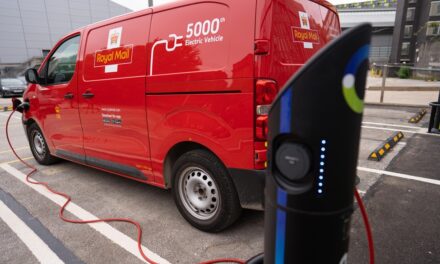
Canada Post cut vehicle fleet emissions by 4.5% in 2011
Canada Post her now cut its vehicle fleet carbon emissions by 12.6% since 2008, including a 4.5% drop last year alone, according to its latest Social Responsibility Report. The report issued just ahead of today’s World Environment Day states that the Crown Corporation reduced carbon emissions from its owned fleet by 2,400 tonnes in 2011.
Building emissions remained relatively stable in 2011, but have fallen 3.9% since 2008.
Overall, Canada Post has cut its emissions by 6.3% since 2008, and is aiming to reach a 20% reduction by 2020.
Canada Post said it will continue working to cut its carbon emissions by ongoing upgrades to its fleet, which are set to include the replacement of 2,400 vehicles with more fuel-efficient light vehicles, as well as expanding the use of alternative fuels.
The Canada Post fleet currently includes 10 natural gas vehicles, 14 electric vehicles, 23 hybrid vehicles and 123 propane-fuelled vehicles, and is expecting to have 340 vehicles that run on propane by the end of this year.
During 2011 Canada Post actually expanded the total number of its fleet vehicles by 6.2%, but managed to reduce its overall fuel consumption by 3.7% and number of kilometres traveled by 4%.
The Corporation’s courier subsidiary Purolator now has an impressive 586 hybrid-electric delivery vehicles – 19% of its pick-up and delivery fleet, “more than any other freight and parcel solution provider in North America”, it said.
The company has seen 12,450 tonnes of annual greenhouse gas emissions eliminated through the optimisation of routes traveled by its ground vehicles.
Customer emissions
Within the Canada Post report, the Corporation also pointed to its impact on reducing the greenhouse gas emissions of its customers, for example in allowing consumers to shop online instead of driving to a store to make a purchase.
“A 10-kilometre roundtrip to the mall to purchase a single item would produce approximately three to five times as much carbon dioxide (2,300 grams) when compared to purchasing the same item online and having it delivered by Canada Post,” said the report.
The report noted that regular parcel delivery emitted up to six times less carbon emissions than express delivery, but said its mail and parcel delivery service shared routes to ensure greater volume density for each kilometre travelled, leading to a lower environmental impact for items delivered.
Canada Post said it calculated that for a typical Canadian household, processing and delivery of mail generates 27kg of greenhouse gas emissions each year, about a tenth of 1% of a typical Canadian household’s emissions, and less than a quarter of the emissions generated by a single tank of gas.
The report said the life cycle characteristics of physical and digital mail were “so dissimilar as to be practically impossible to compare”.
Health and Safety
Elsewhere in the Canada Post 2011 Social Responsibility Report, the company highlighted a 6.2% reduction in injuries compared to the previous year, and a 2.4% reduction in road collisions.
Canada Post adopted a new Health and Safety Policy during the year, and said it was continuously improving areas like hazard assessment. The year did see the first fatality in the last three years, however, after one employee passed away due to a fall while at work.
The Corporation said currently about 20% of injuries occur in mail processing plants, with 80% related to delivery activities.
The 2011 report also noted the $6.9m raised by Canadians since 2008 through the Canada Post Foundation for Mental Health.











